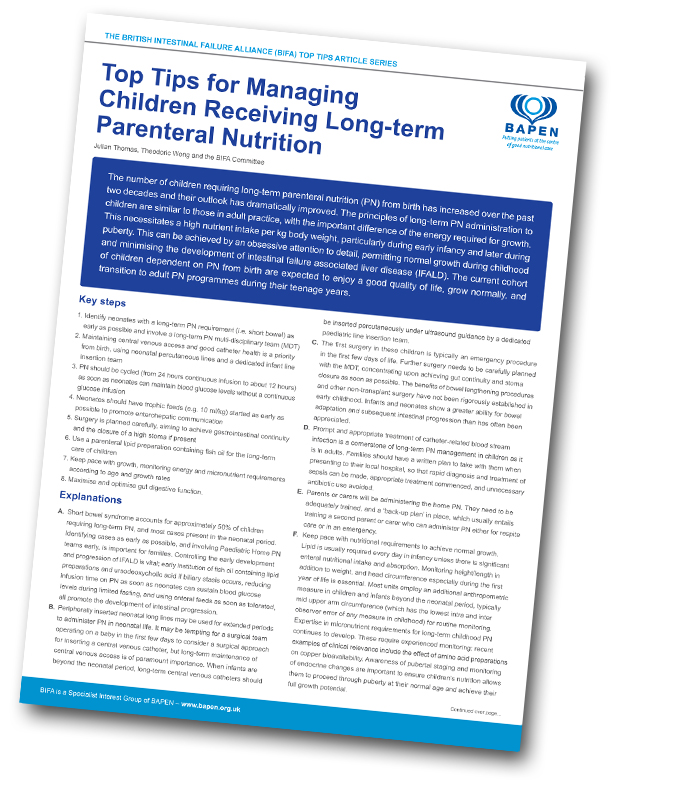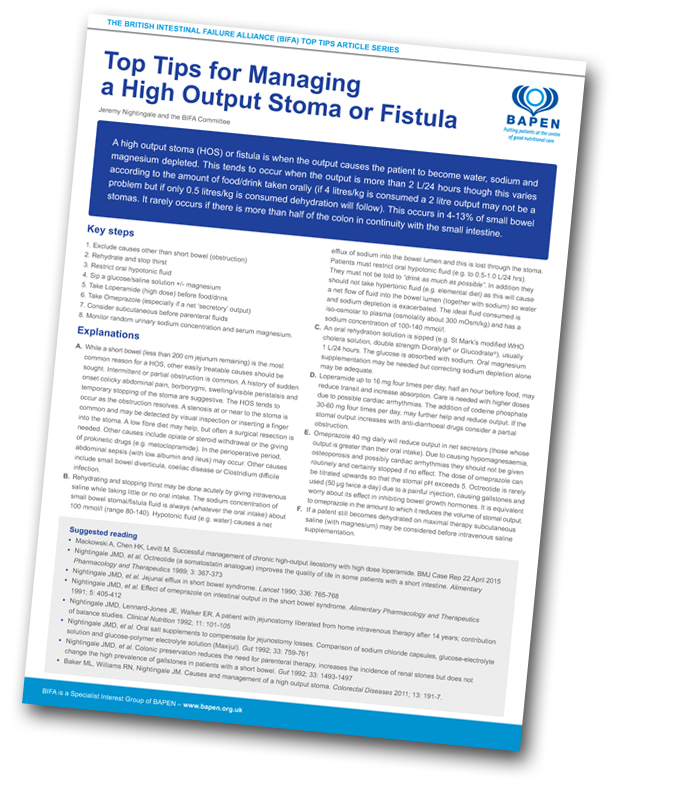The British Intestinal Failure Alliance (BIFA)
Top Tips Article Series
During 2018, through In Touch, BIFA – a Specialist Interest Group of BAPEN – will be sharing a series of articles. Utilising the breadth of experience of the BIFA Committee, each article will deliver top tips on a variety of topics, providing you with practical, helpful advice to utilise in your day-to-day practice.

Managing Children Receiving Long-term Parenteral Nutrition
Julian Thomas, Theodoric Wong and the BIFA Committee

The number of children requiring long-term parenteral nutrition (PN) from birth has increased over the past two decades and their outlook has dramatically improved. The principles of long-term PN administration to children are similar to those in adult practice, with the important difference of the energy required for growth. This necessitates a high nutrient intake per kg body weight, particularly during early infancy and later during puberty. This can be achieved by an obsessive attention to detail, permitting normal growth during childhood and minimising the development of intestinal failure associated liver disease (IFALD). The current cohort of children dependent on PN from birth are expected to enjoy a good quality of life, grow normally, and transition to adult PN programmes during their teenage years.
Click here to download the article.

Managing a High Output Stoma or Fistula
Jeremy Nightingale and the BIFA Committee

A high output stoma (HOS) or fistula is when the output causes the patient to become water, sodium and magnesium depleted. This tends to occur when the output is more than 2 L/24 hours though this varies according to the amount of food/drink taken orally (if 4 litres/kg is consumed a 2 litre output may not be a problem but if only 0.5 litres/kg is consumed dehydration will follow). This occurs in 4-13% of small bowel stomas. It rarely occurs if there is more than half of the colon in continuity with the small intestine.
Click here to download the article.
